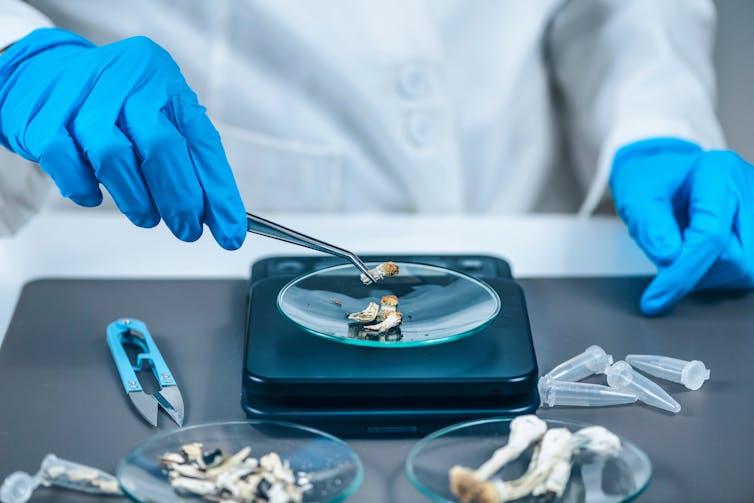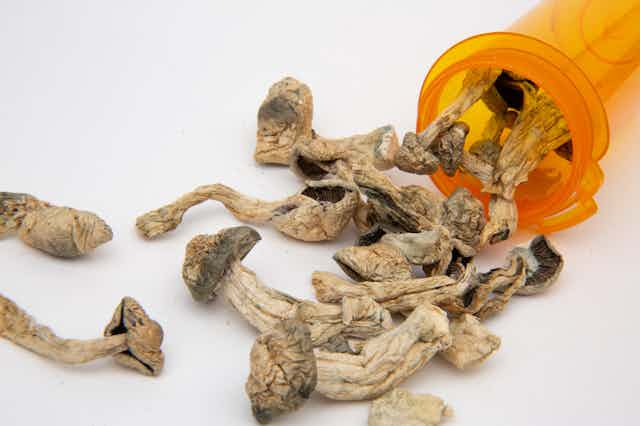Psychedelic research has surged in recent years, sparking enthusiasm among clinicians, investors and the general public. Clinical trials are indicating transformative outcomes for people struggling with mental illnesses like depression, post-traumatic stress disorder and end-of-life anxiety.
Recently, the spotlight is turning to eating disorders (ED), a group of severe and difficult-to-treat conditions. A survey revealed that 70 per cent of people view psychedelic medicine as a promising avenue for EDs, and numerous reports depict positive results.
Media platforms abound with compelling personal stories, from online articles to Netflix documentaries, Reddit threads, TikTok videos and YouTube clips. But the critical question remains: does the scientific evidence align with the hype?
As a doctoral student in the field of neuropsychiatry with a personal interest in EDs, I delved into the literature to assess the evidence for psilocybin-assisted therapy in ED treatment.
Long-term management of EDs
EDs have the highest mortality rate among psychiatric disorders and their prevalence is on the rise. Treatment usually involves a combination of medication and therapy, but avoidance, drop-out and resistance are all too frequent. Many patients go untreated or endure symptoms for life. Overall, we lack treatment options that yield long-term improvements.
While the causes of EDs are diverse, patients often exhibit alterations in brain connectivity and serotonin signalling. These changes affect regions involved in body image, mood, appetite and reward, resulting in “cognitive inflexibility.”
This manifests as rigid thought patterns like religious calorie counting, restrained emotions and punishing exercise regimens, among other ED behaviours. Cognitive inflexibility may also be the culprit for treatment resistance itself.

Underlying mechanisms
It seems that standard treatments do not address the full range of mechanisms underlying EDs. Unlike conventional talk therapy led by therapists, psilocybin therapy uses the psychedelic experience to alter brain activity and foster cognitive flexibility.
Psilocybin, a naturally occurring plant alkaloid found in the Psilocybe genus of mushrooms, was first introduced to western medicine by Indigenous communities in the 1950s. It increases serotonin signalling while reducing the activity of brain networks linked to rigid thinking patterns. These changes are thought to enhance body image, reward processing and relax beliefs, ultimately catalyzing the therapeutic process. But does clinical evidence support this? Well, somewhat.
A case study described a woman with treatment-resistant anorexia nervosa who, after two doses of psilocybin, experienced immediate mood enhancement, increased insight into the root of her symptoms and long-term weight resolution.
Another study found that a single dose of psilocybin was safe and tolerable in women with anorexia nervosa, reducing their body image concerns.
In another report, an individual with body dysmorphia responded well to both fluoxetine and psilocybin treatment, but was treatment-resistant to other medications.
Theoretical evidence suggests a role for psilocybin in treating binge eating, compulsive overeating and food addiction, while also improving symptoms of depression and trauma. However, despite these exciting prospects, numerous limitations temper the results.
Read more: The potential of psychedelics to heal our racial traumas
Challenges with conducting research
The gold standard of evidence for any intervention is the randomized controlled trial (RCT), where participants are randomly assigned to an intervention or control group, ideally without knowing which they were assigned. The idea is to reduce the impact of individual differences and expectancy bias to truly see if an intervention is effective or not.
However, for psychedelic RCTs, it can be difficult to properly blind participants — hallucinations are a bit of a dead giveaway.
Many studies feature small sample sizes lacking diversity, which limits real-world applicability. While psilocybin has a good safety profile, participants are highly vulnerable during psychedelic experiences. The experience is often ineffable and different for everyone, making the process of informed consent ethically challenging.

It is also crucial to acknowledge “excessive enthusiasm” in the field, where researchers’ and participants’ personal use of psychedelics may introduce bias. Among other limitations, we need to be aware of how this impacts the results portrayed in the media.
Patient safety
Over-emphasizing the therapeutic actions of psilocybin or selectively presenting positive results may cause more harm than good. Due to legal restrictions, some patients source psilocybin illegally, without proper safety protocols or medical supervision. While this may reflect a health-care system failure, a proper mindset and environment are vital for a safe and productive session.
The therapeutic actions of psilocybin extend beyond the psychedelic experience; integration with a therapist is key to applying the benefits. Narratives suggesting a single psilocybin experience as a cure-all are dangerous.
Lastly, we need to consider how the financial hype surrounding psilocybin could inflate costs, limiting access to the individuals who need it most.
While excitement about psilocybin-assisted therapy is justified, cautious optimism is essential. We still need to determine the optimal therapeutic framework for EDs and how this can be effectively and ethically provided at large.

